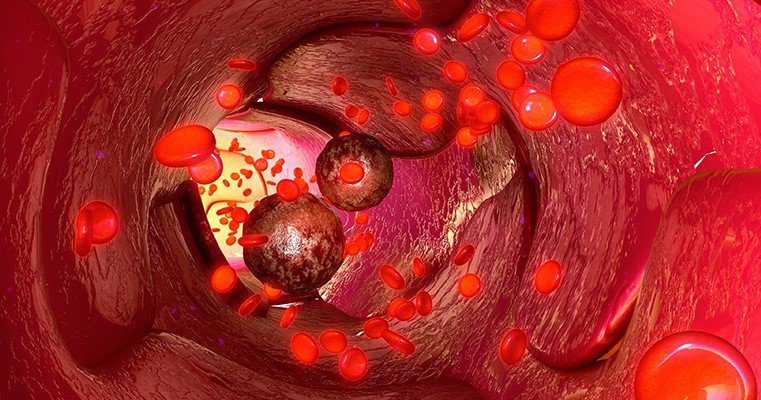Abnormal recognition of blood pathology
This is an automatically translated article.
The article was written by Associate Professor, Doctor, Doctor Yi Hyeon Gyu - Head of Hematology and Cell Therapy Unit, Vinmec Times City International Hospital
The main components of blood include plasma, white blood cells, platelets, and red blood cells. In particular, white blood cells help fight infections, red blood cells carry oxygen to tissues in the body, and platelets help blood clotting, preventing bleeding. When one of these components is dysfunctional, a serious physical imbalance can occur.
Disorders of the blood cells can lead to many diseases, both benign and malignant, and because the blood circulates throughout the body, these conditions can cause a systemic illness, with many symptoms. flourish.
1. Possible symptoms in blood diseases
1.1 Symptoms of anemia
Anemia occurs associated with a decrease in the number of red blood cells. Because the function of red blood cells is to carry oxygen throughout the body, any deficiency of red blood cells results in hypoxia in the target organs of the body, causing symptoms such as rapid breathing or shortness of breath when breathing. movement, dizziness, fatigue or paleness.
1.2 Symptoms related to the proliferation of blood cancer cells
Enlargement of internal organs and other organs due to invasion of cancer cells into organs such as liver, spleen, and lymph nodes. In some cases, these cells can invade the central nervous system, which can manifest as meningeal irritation, causing headaches and vomiting.
1.3 Symptoms of lymphadenopathy
Self-palpable, painless lymph nodes are common in the neck, armpits, groin...

Hạch vùng cổ, nách, bẹn... sưng to là triệu chứng liên quan đến bệnh lý về máu
1.4 Symptoms of infection
It is a symptom associated with a decrease in the number of white blood cells in the peripheral blood. The function of white blood cells is to protect the body against foreign pathogens such as bacteria, so the number of white blood cells is reduced, leading to insufficient resistance, resulting in infection. bacteria.
1.5 Symptoms of bleeding
This is a symptom related to a low platelet count. Since the function of platelets is to stop bleeding, any deficiency of platelets increases the risk of bleeding even with minor trauma, and results in small petechiae, bruises under the skin, bleeding. from the gums or from the nose. Visceral bleeding can occur in severe cases.
1.6 Systemic symptoms due to malignancy
Fatigue, emaciation, rapid collapse, persistent fever, night sweats, weight loss of more than 10% of body weight in 6 months with no known cause.
2. Tests to be performed to detect, evaluate, and monitor blood pathology
Blood test - blood test: The number of white blood cells may increase or decrease, the number of platelets, red blood cells may decrease. In some cases, cancer cells can be observed in the peripheral blood.
Marrow test- bone marrow aspiration: A bone marrow aspiration is the removal of a small amount of marrow tissue in the form of a liquid to determine the presence of cancer cells, which is a decisive factor for the diagnosis of disease. blood. Since the bone marrow is the "factory" of blood cells, it is from this point of view that abnormalities can be assessed.
Serum and urinalysis - biochemical test : This test will analyze blood and urine components. For example uric acid levels in plasma and urine, LDH levels will increase in a short period of time. number of illnesses.
Cell classification test - cell surface antigen: The antigens on the surface of the cell membrane are expressed specifically for each cell line. With the cell characteristics, we can identify the normal blood cell type, the abnormal blood cell type. From there to evaluate the types of blood diseases.

Xét nghiệm tế bào máu có thể quan sát được tế bào ung thư ở máu ngoại vi
Test for genetic abnormalities - chromosomal abnormalities: Gene and chromosomal abnormalities can be found in many blood conditions both benign and malignant. Determination at the cellular level will help in diagnosis, treatment, prognosis, or even genetics.
3. Common blood diseases
Benign diseases: Iron deficiency anemia, thalassemia, thrombocytopenia, hemophilia... Malignant diseases: Acute leukemia, chronic leukemia, myeloproliferative disorders, myeloproliferative...
4. How to recognize blood disease early?
Need periodic health check, with basic blood test, can monitor health status as well as detect blood diseases early. Always raise awareness of unusual symptoms that occur, so that they can be examined early.
Hematology and Cell Therapy Unit - Vinmec Times City International General Hospital is a prestigious address for examination and treatment of blood diseases. Established on September 3, 2019, Unit has the role of providing intensive medical care for patients with benign or malignant hematological diseases, by means of chemotherapy, cellular immunotherapy. , hematopoietic stem cell transplantation, autologous immune boosting therapy,...
Please dial HOTLINE for more information or register for an appointment HERE. Download MyVinmec app to make appointments faster and to manage your bookings easily.
This article is written for readers from Sài Gòn, Hà Nội, Hồ Chí Minh, Phú Quốc, Nha Trang, Hạ Long, Hải Phòng, Đà Nẵng.





